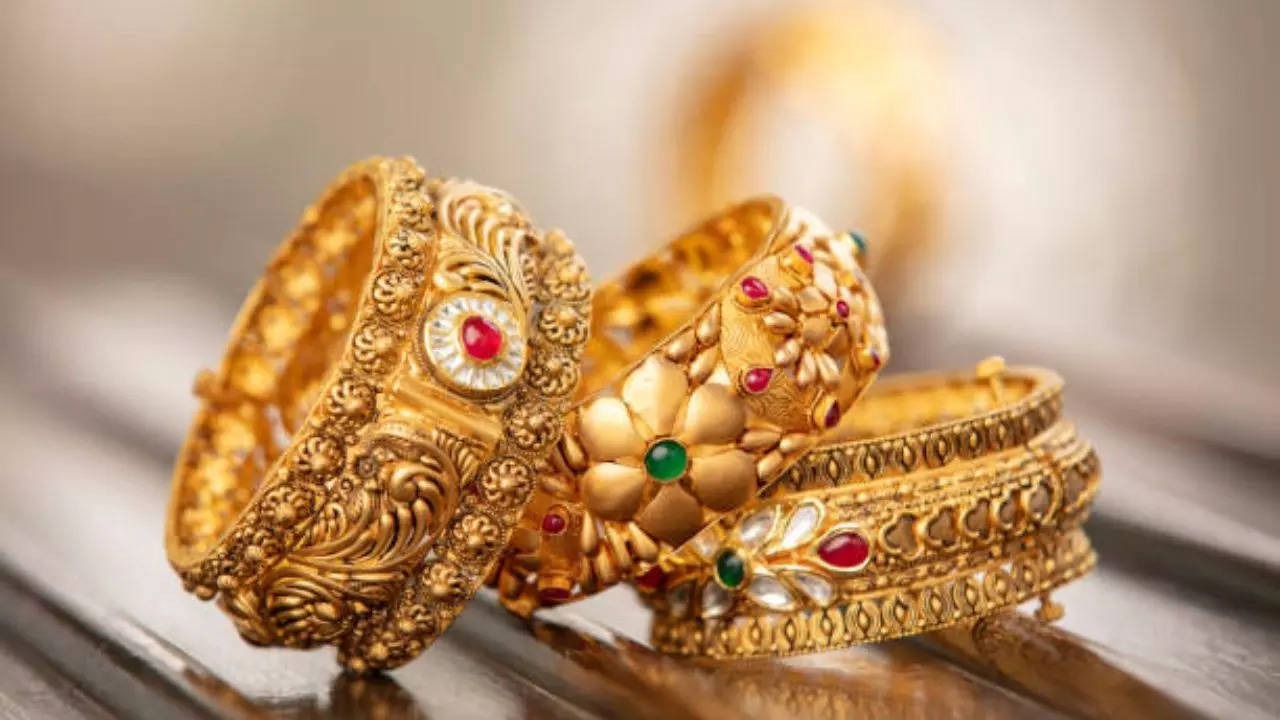Introduction
Gold jewelry is more than just a fashion statement—it’s a symbol of heritage, investment, and timeless beauty. From ancient civilizations to modern fashion runways, gold has maintained a powerful position in the world of adornment. This precious metal exudes luxury, elegance, and tradition. In this guide, we’ll explore the rich history, cultural significance, various types, modern trends, care tips, and buying guides to help you fully understand and appreciate the world of gold jewelry.
1. The Rich History of Gold Jewelry
Gold has been cherished for thousands of years. Some of the earliest known pieces of gold jewelry date back to 4000 BCE in Mesopotamia and Egypt.
1.1 Ancient Egypt
Gold was associated with the sun god Ra. Pharaohs were buried with elaborate gold pieces that symbolized power and divinity.
1.2 Ancient India
India has had a deep connection with gold for over 5,000 years. Gold jewelry is deeply embedded in Indian weddings, festivals, and rituals.
1.3 Ancient Rome and Greece
Romans used gold for coins and jewelry, often engraved with images of gods, emperors, and mythological scenes.
1.4 Pre-Columbian Civilizations
In the Americas, gold was considered sacred. The Incas referred to it as the “sweat of the sun.”
2. The Cultural and Spiritual Significance of Gold Jewelry
Gold isn’t just a decorative item—it has deep cultural and spiritual meanings.
2.1 Symbol of Wealth and Status
In many cultures, the quantity and quality of gold jewelry signify wealth and social status.
2.2 Wedding Traditions
In Indian, Middle Eastern, and Southeast Asian weddings, gold jewelry is a central part of bridal attire.
2.3 Religious and Spiritual Use
Gold is used in temples, churches, and mosques to symbolize purity, immortality, and divine connection.
2.4 Heirlooms and Legacy
Gold jewelry is passed down through generations, carrying emotional and historical value.
3. Types of Gold Jewelry
Gold jewelry comes in various forms and styles, suitable for different occasions and tastes.
3.1 Based on Gold Type
- Yellow Gold – The most traditional form, made by mixing pure gold with zinc and copper.
- White Gold – Mixed with palladium or nickel, and often rhodium-plated.
- Rose Gold – Created by adding copper, giving it a romantic pink hue.
- Green Gold – A mix of gold and silver, sometimes with traces of cadmium.
3.2 Based on Karat Value
- 24K (99.9%) – Pure gold, soft and not ideal for intricate jewelry.
- 22K (91.6%) – Common in Indian jewelry, good balance of purity and strength.
- 18K (75%) – Common in Western countries, durable and rich in color.
- 14K and 10K – Popular in fashion jewelry due to increased hardness.
3.3 Jewelry Types
- Necklaces – Chains, chokers, and pendants.
- Earrings – Studs, hoops, jhumkas, danglers.
- Rings – Wedding bands, engagement rings, signet rings.
- Bracelets and Bangles – Cuffs, charm bracelets, kada.
- Anklets and Toe Rings – Often seen in traditional cultures.
- Brooches and Pins – Decorative and functional.
- Hair Ornaments – Maang tikka, hairpins, and crowns.
4. Gold Jewelry Across the World
4.1 Indian Gold Jewelry
Known for its elaborate and ornate designs. Regional variations include:
- Temple Jewelry – Inspired by South Indian deities.
- Kundan and Polki – Rajasthani styles with uncut stones.
- Meenakari – Enamel work originating from Jaipur.
- Filigree Work – Intricate thread-like designs, especially from Odisha and West Bengal.
4.2 Middle Eastern Jewelry
Known for bold, geometric patterns and heavy gold pieces often used in dowries.
4.3 European Gold Jewelry
Includes elegant, minimalistic designs, especially in Italian and French jewelry.
4.4 African Jewelry
Uses gold in symbolic tribal pieces, often combined with beads and natural materials.
5. Gold Jewelry as an Investment
Gold is not only ornamental but also a secure investment option.
5.1 Value Retention
Gold prices fluctuate but generally trend upward over time.
5.2 Liquidity
Gold jewelry can be sold or pledged easily in times of need.
5.3 Gold vs. Other Assets
Compared to stocks or real estate, gold offers safety during economic downturns.
5.4 Making the Right Investment
Choose 22K or 24K for better resale value; avoid pieces with heavy stone work if buying for investment.
6. How to Buy Gold Jewelry
6.1 Hallmarking
Ensure the jewelry is BIS-hallmarked (in India) or certified by an appropriate authority in your country.
6.2 Weight and Pricing
Gold jewelry is priced per gram based on purity and current market rates. Making charges and GST may apply.
6.3 Reputable Jewelers
Always buy from trusted and well-reviewed jewelers. Get a detailed bill with breakdowns.
6.4 Customization and Trends
Explore designer pieces, custom engravings, or matching sets based on the occasion.
7. Popular Trends in Gold Jewelry
7.1 Minimalist Designs
Delicate chains, geometric rings, and fine bracelets are trending among younger audiences.
7.2 Vintage and Antique Revival
Old-school temple designs, heritage motifs, and filigree patterns are back in vogue.
7.3 Personalized Jewelry
Initial pendants, birthstone rings, and custom-engraved pieces are gaining popularity.
7.4 Fusion Jewelry
Combines gold with other materials like pearls, diamonds, or colored stones for a modern twist.
8. Caring for Your Gold Jewelry
8.1 Cleaning Tips
- Use mild soap, warm water, and a soft brush.
- Avoid harsh chemicals and abrasives.
- Pat dry with a soft cloth.
8.2 Storage Tips
- Store pieces separately to avoid scratching.
- Use anti-tarnish bags or cloth-lined boxes.
- Avoid humidity and direct sunlight.
8.3 When to Take it Off
- During workouts, cleaning, or swimming.
- When using cosmetics, perfumes, or hair sprays.
8.4 Professional Maintenance
- Get jewelry cleaned and polished professionally once or twice a year.
- Re-plate white gold with rhodium if it starts to yellow.
9. Symbolism and Emotional Value
Gold jewelry is often associated with major life events:
- Birth – Baby bangles and earrings.
- Weddings – Mangalsutra, engagement rings, bridal sets.
- Festivals – Akshaya Tritiya, Diwali, Eid, and Christmas often see gold purchases.
- Milestones – Anniversaries, birthdays, and graduations.
Each piece tells a story, often becoming a cherished heirloom passed from one generation to the next.
10. Ethical and Sustainable Gold Jewelry
10.1 Ethical Sourcing
Look for jewelers who source gold from conflict-free zones and follow ethical mining practices.
10.2 Recycled Gold
Many brands now offer jewelry made from recycled gold, reducing environmental impact.
10.3 Certifications
Fairtrade Gold, RJC Certification (Responsible Jewellery Council), and other labels ensure sustainability.
Conclusion
Gold jewelry is not just a luxury—it’s a blend of art, emotion, history, and tradition. Whether you wear a simple gold ring or an elaborate bridal necklace, every piece reflects a personal story. It is a connection to the past, a symbol of the present, and an investment in the future. As trends evolve and markets shift, the glow of gold jewelry remains timeless, reminding us that beauty, in its purest form, never fades.






